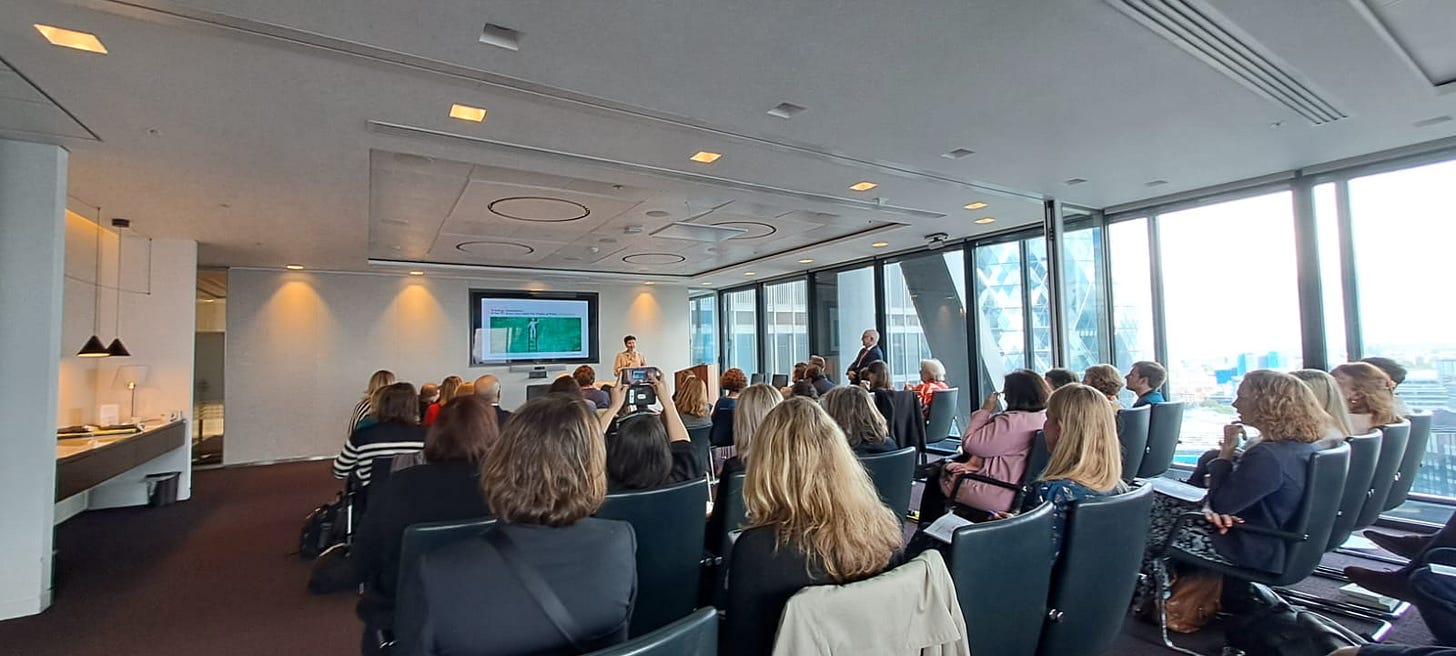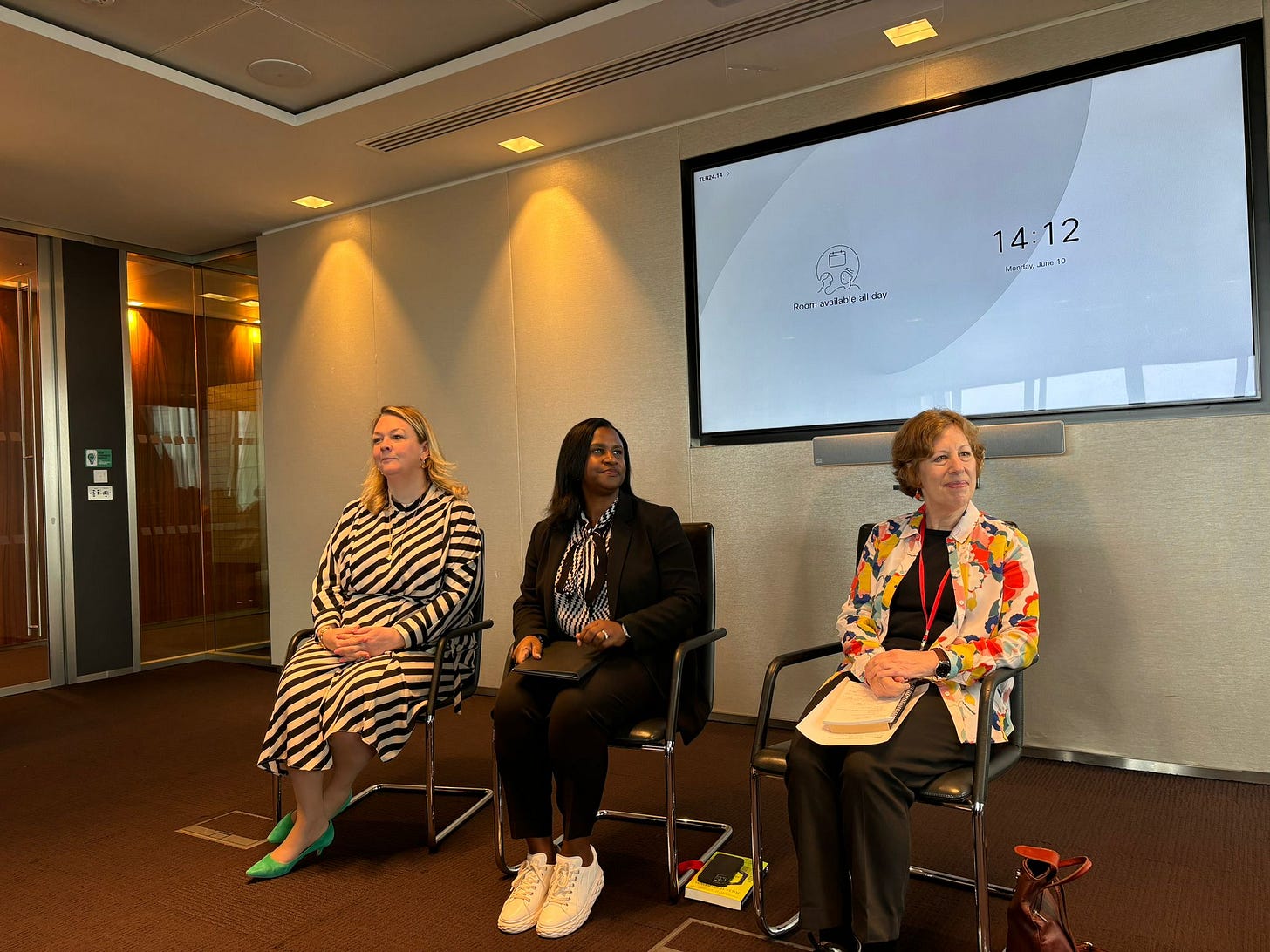From 'good jobs' to creative responses to AI
What makes a 'good' job, AI solving real problems, and IKEA's creativity
I write Future Work/Life to help you build great teams and careers. If you find it interesting, please share it!
I began this week immersed in the present and future of work at Julia Hobsbawm’s excellent Workathon event.
Here are my three main reflections:
It’s ok to hold two ideas in your head at once
Like so many areas of life, discussions about work are so binary that it’s easy to become quickly disillusioned.
“We must return to the office to save our economy!” vs “Only dinosaurs still think offices are a good idea!”
“AI is the going to take our jobs!” vs “AI is our route to true self-actualisation!”
As so often, the truth lies somewhere in the middle and depends on the organisation and the individual.
Hilary Cottam’s fascinating discussion on what a ‘good working life looks like in this century’ got me thinking about the importance of designing a system that acknowledges the basic requirements of every individual from their work…
Getting paid a fair and decent wage.
Feeling safe and not being surveilled.
Some degree of certainty on when they’re working.
…with what some might consider ‘nice-to-haves’ but really represent the characteristics of a ‘good job’ and its place in your life. Like a sense of meaning, your skills being recognised, and having the time to both play and care for others.
We’re experiencing a mass transition in our work, driven by technological change. When tackling such big issues, oversimplification may work in newspaper or LinkedIn headlines, but it will not help us respond effectively as individuals, businesses or society.
Take a position, yes. Express your point of view, absolutely. But creating a future of work that’s fair and offers opportunity to all requires really listening to the perspectives of others.
It seems a bit mad that I’m writing something so obvious, but it’s worth reminding ourselves of this occasionally.
Another week, another conference at which AI was a major talking point.
While I love imagining new possibilities, I’ve learned an important lesson working in start-ups for so long - the importance of solving real problems.
In this case, the test for any AI-based product or initiative should be whether it will actually make a difference in a customer's or employee’s life.
I watched a great session with Gemma Lines (Chief People Officer of MS Amlin), Syreeta Brown (Group Chief People and Communications Officer of Virgin Money), and Gabriella Braun (author of All That We Are) at Workathon. Their perspective aligns with so many of the leaders I speak to every week. The reality is that most organisations and leaders are prioritising challenges like:
Understanding the rise of burnout and disengagement.
Improving visibility on performance and productivity.
Adapting to changing expectations on flexibility.
If AI can help with this, great. If it can’t - at least in the short term – then it’s “wishful thinking”, as one audience member put it, to believe it’s about to revolutionise the workplace.
Not that you shouldn’t explore and experiment. But whether you’re running a team or building new products, don’t get blinded by the shiny new object and forget to prioritise the things people really care about.
Creativity is important, but not always in the way you might think.
While we’re talking AI, it’s often said (including by me) that creativity will be a critical skill as technology becomes smarter and more ubiquitous. But what does that actually mean?
Well, as Henry Coutinho-Mason explained in his fantastic talk, in IKEA’s case, creativity doesn’t just mean designing good-looking, functional and cheap products. It also means rethinking how they use their human talent.
IKEA’s AI chatbot, Billie, launched in 2021 and now handles 47% of its customer queries. You might think this is a great opportunity to cut costs. But no, they’re asking a different question:
“How can we redeploy our existing staff AND increase the average order value from online and offline transactions?”
The answer was to upskill their teams to become interior designers – 8,500 at the last count. Not high-end ones, necessarily. Just good enough to show what’s possible to customers. To allow them to envision how to redesign their home.
As Matt Boyle reported in Bloomberg this week, it’s not easy or cheap to replace good people in this market, which demands a creative response. In this case, increased pay. In the case of customer service reps, upskilling.
All in all, another week filled with plenty of food for thought. Plus, it was great to meet at least a dozen connections who I’d never previously met IRL.
Thanks for reading and I’ll see you here again next week.
Ollie







